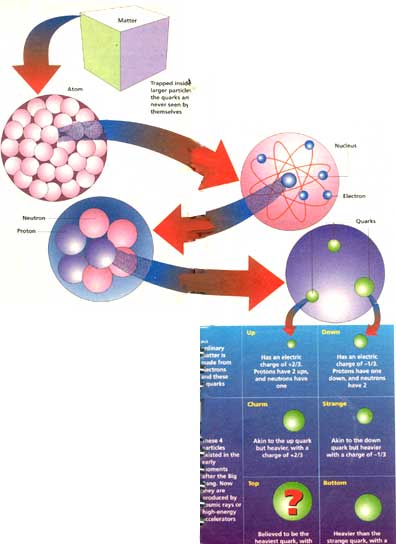The crux of matter
The crux of matter

Over 200 subatomic (or fundamental) particles have been detected so far. Each appears to have an antiparticle, which possesses the same mass as the particle but manifests the opposite side of one other common quality such as the electric charge. For instance, an electron which is negatively charged will have a corresponding antielectron that carries the same degree of positive charge, but in other respects is identical to the former.
Two types of particles that are the fundamental building blocks of all matter are the quarks and the leptons. Quarks take part in the strong nuclear interactions while leptons experience the other 3 types of forces known -- the gravitational, the electromagnetic and the weak forces.
Particles made up of quarks are known collectively as hadrons. Those such as the proton and neutron that consist of 3 quarks are called baryons; others formed from a quark and an antiquark are called mesons.
The leptons are of 3 types -- electron, muon and tau. Each of the leptons has an associated neutrino -- electron-, muon-, and tau-neutrino -- that possess no electric charge.
A third group of subatomic particles consists of bosons, which are not constituents of matter but they transmit the 4 types of forces. For example, the 'electro-weak' force, the electromagnetic and the weak forces in unified form, is maintained through the emission and absorption of photons and of massive particles known as W and Z bosons by interacting leptons and their associated neutrinos. Other bosons include the gluons which transmit the strong nuclear force that binds quarks in hadrons.







